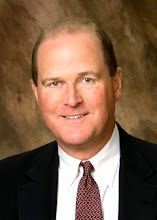1/19/08
Yesterday, President Bush and Treasury Secretary Hank Paulson revealed some, not many, details of their “stimulus” plan designed to remedy a problem that has its genesis in overspending by encouraging consumers to spend more. (See my 1/7/08 post “They’re All Keynesians Now,” which appeared 11 days before The Wall Street Journal 1/18/08 lead editorial “We’re All Keynesians Now” (Rather than paraphrasing the Nixon quote, as I did, the Journal simply repeated it, with attribution, but I digress.) which made the same essential argument.) The total size of the deal, though not specified, was estimated by Paulson to be about 1% of GDP, which would equal about $140 billion.
The first objection, other than those outlined in my 1/7/08 post, came from the Democrats, who claimed that the package would not “do enough” and was not skewed sufficiently toward low income workers, who would be more likely to spend, and thus, one supposes, to solve the problems wrought by overspending by spending even more aggressively. House Speaker Pelosi and her henchmen are working on a plan that will spend more and be more targeted.
This Democratic objection was eminently predictable. In my 10/14/07 post, I explained how politics work in this country, and repeated this explanation in my 12/2/07 post:
“This is in the normal course of our government’s workings: The Democrats come up with some asinine plan to remedy some problem, real or imagined, with your money. The Republicans respond with a slightly less asinine plan to attack the problem, also with your money, making sure that the primary beneficiaries of the program are among the GOP’s favored constituencies. That is how the world works.”
The only thing different with this latest manifestation of the way the world works was its sequence and its intensity. In this “stimulus” plan, the Republicans have come to the table first with a colossally asinine plan. The Democrats will soon follow with a more expensive, and more colossally asinine, plan. But I digress, again.
The second objection to the Bush plan was trotted out by a panel assembled by CNBC to discuss the plan. The CNBC cabal, clearly wanting a plan designed to provide more direct, immediate, and generous government help to traders who took almost hilariously ill-advised positions and who now have taken a break from decrying the evils of big government to seek a federal rescue, decried the Bushite plan not because it is the financial equivalent of trying to cure a disease by injecting the patient with greater doses of the infection or that it involves taking money out of one pocket and putting it into another, but rather because it “won’t work.” Why? Because some surveyed consumers will use the $800 or $1600 handout to buy gas or groceries, pay utility bills, or (Saints preserve us!) pay down credit card balances rather than rush right out to buy yet another useless gimcrack made in China.
It seems to me that, if the government insists on “doing something” (and what politician can resist the urge to “do something” with your money?) about the nation’s current financial problems and that “something” must involve handing out your money, it might be a good sign, and actually have some ameliorative effect, if the recipients of your forced largesse were struck by a sudden bout of fiscal prudence and used the money to pay down some debt. It only makes sense that a shot of financial sobriety might help a situation that arose out of a ten plus year consumer spending binge. But the politicians, and the Wall Street free market tough guys who, as usual, push to the front of the line when the government is doling out help, fail to see, or pretend not to see, this logic. They, respectively, continue to insist that the remedy for our overspending problem is either more spending or encouraging more muddle-headed financial engineering by having the government kiss all those bad positions and make them better.
Saturday, January 19, 2008
Subscribe to:
Post Comments (Atom)

No comments:
Post a Comment